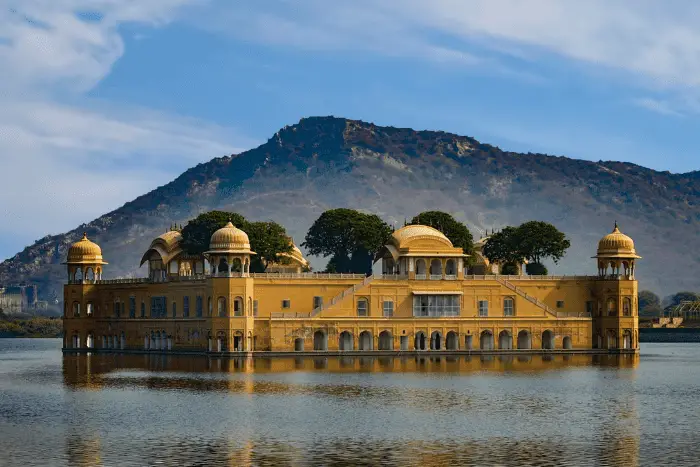The Varanasi ghats are not comparable to other well-known tourist destinations such as New York City, London, or Paris. It is a city unlike any other in the world, and it provides opportunities for adventures that are unavailable in any other location. It emanates a sense of timelessness elegance and historical grandeur, which is exactly what one would anticipate from a city of its age.
You will find it in the state of Uttar Pradesh, which is located in the northern part of India, right next to the Ganges River. The city that is today known as Varanasi was formerly known as Benares, and before that, it was called Kashi. Varanasi is one of India’s seven Holy Cities. The way of life in this old city, which has a history that goes back more than 5,000 years, is too rooted for words to adequately describe.
While in Varanasi, make sure to check out these top sites, events, and experiences the city has to offer. The first thing that comes to everyone’s mind is to go to the Ganges and down the several flights of stairs (which are referred to as the Varanasi ghats in this part of India) that go down to the river.
In the Ganges, there are more than 80 Varanasi ghats that lead down to the water. There are many other topics outside the burning ghats that will be discussed, but the flaming ghats will be one of them. Let us take you on a boat ride down the Ganges at dawn or night so that we can show you around the most intriguing place you will ever visit—the Varanasi ghats.
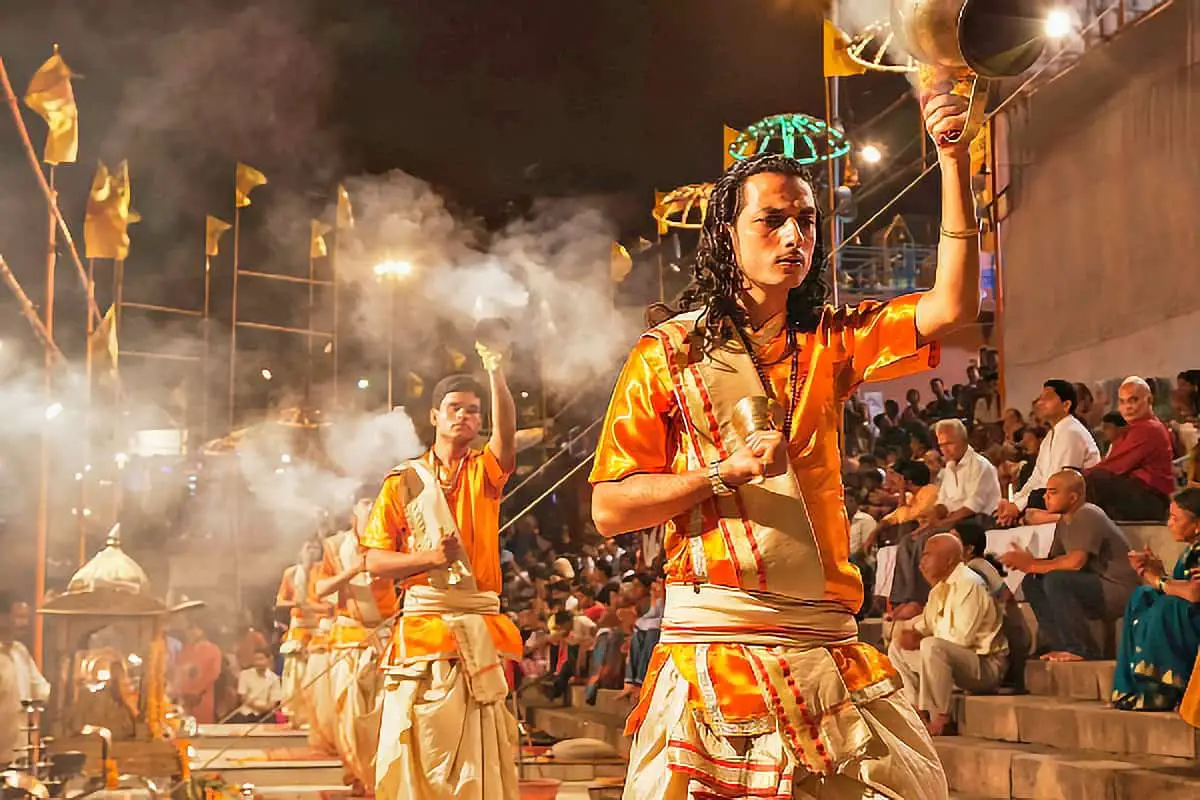
Riding a Boat Through the Varanasi Ghats
The Ganges River is revered by Hindus as a holy river, and it is said that if one travels the length of the Ganges River in a small boat, they will experience a deep transformation in their spiritual life.
Taking a boat ride along the Ganges in Varanasi is a fantastic opportunity to view the city and explore the many Varanasi ghats and historical sites that line the riverbanks of the Ganges. Take a few moments to relax and familiarize yourself with the culture of the area before pulling out your camera to record the stunning landscape.
This is the kind of event that stays with you for good, and you will remember it for the rest of your life; in fact, you will probably never forget it.
It is recommended to take a cruise on the Ganges either very early in the morning or very late in the evening for the most delightful experience. This is due to the fact that the reflection of the sunrise or sunset in the river is particularly stunning during certain times of the day. Between the hours of 5:30 and 8:00 in the morning, Varanasi is at its most tranquil and stunningly lovely.
Certain people who are interested in the sunrise should schedule their journey for those periods. If seeing the sun go down is more important to you than participating in any of the other aspects of the Aarti ceremony, you should time your event to take place when the one thousand candles have been lit and are shining light into the sky.
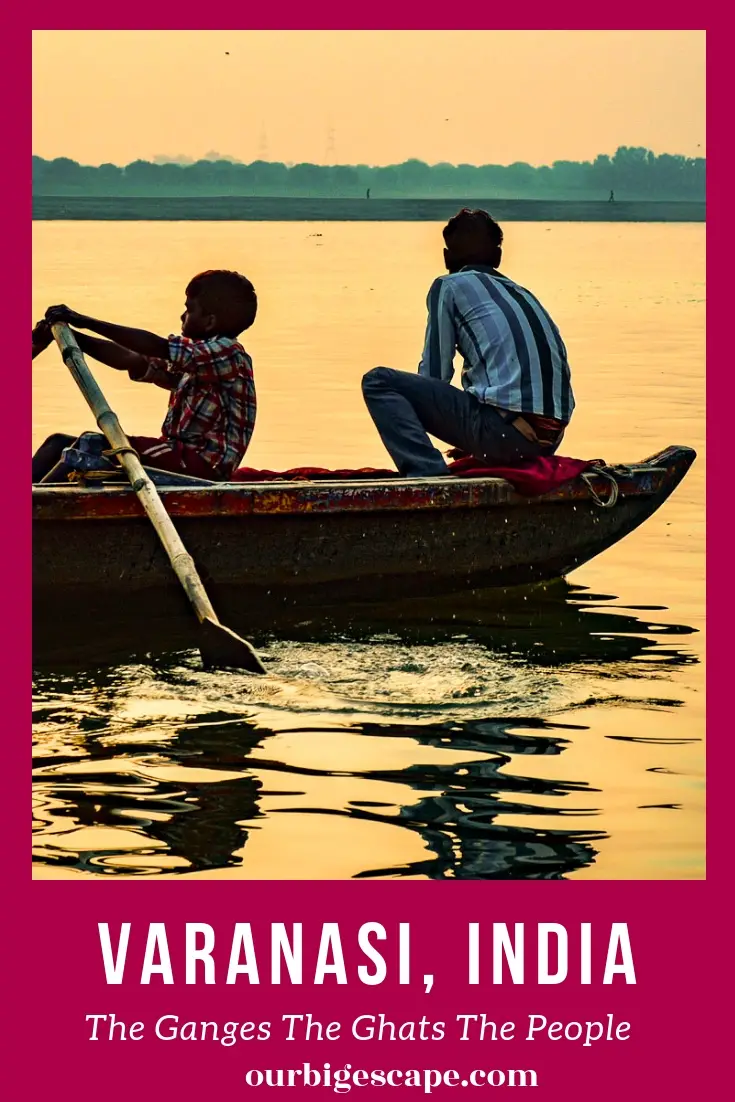
check out our video
Bathing in the Ganges
The spiritual attractiveness of the Varanasi ghats is provided by the holy Ganges River, which runs through the city. Locals believe you willl be healed completely if you immerse yourself in those sacred waters. . People from all walks of life and all parts of the world travel to the Ganges in the hopes of reaching moksha, also known as freedom from the cycle of birth and death, and seeking forgiveness from their sins.
In Varanasi, there are stairs leading down to the Ganges from more than eighty-four of the Varanasi ghats . At the crack of dawn, people begin to arrive along the river to take a bath and chant in honor of Ganga, the goddess of kindness and cleanliness.

Connecting with the Divine at the Temples and Varanasi Ghats
At Varanasi’s Temples and Ghats, Finding Your Spiritual Connection to the Divine
The majestic temples in the city of Varanasi, which are dedicated to dozens of the Hindu pantheon’s many deities, are the primary lure for visitors to the area. People have the misconception that by traveling to this holy location, they will be able to have direct interaction with the divine. You won’t have a hard time locating a temple in the city of Varanasi.
Discover a deeper level of self-awareness while immersed in the enlightening ambiance of the ancient myths of the Hindu deities. Soak up the enlightening atmosphere.
When it comes to religious buildings, the Kashi Vishwanath Temple is by far the most frequented one. In the year 1780, Queen Ahilyabai Holker of Indore gave the order to construct the temple, which is distinguished by the presence of two golden domes.
The name Kashi was given to the city that is today known as Varanasi during ancient times; this is where the Kashi component of the name comes from. The presence of a Jyortirlinga of Lord Shiva, also known as Vishwanath, provides the explanation for the name of this location.
It is highly recommended that you pay a visit to the Durga Temple, the Ankatha Temple, the Annapurna Temple, the Kalhairav Temple, the Mritunjay Mahadev Temple, the Sankatmochan Temple, the Tulsi Manas Temple, and Bharat Mata Temple. All of these temples were constructed in the 18th century.
check out our video
Want more ideas to round-out your India Visit?
A lot of great options are in these posts!
- 10 Minute Vegetarian Indian Recipes! Super Easy
- 25 Easy Authentic Indian Recipes
- 10 Best India Budget India Travel Guide Tips
- Jaipur India: 4 Best Things to See and What to Do
Strolling Along the Varanasi Ghats at Sunset
The Varanasi ghats on the Ganges River are the city’s most endearing landmarks. Sunset strolls along them will be unlike anything else you’ve ever experienced. Don’t rush through your exploration of the city of Varanasi’s many ghats. Some are for worship, some for cleansing, and some for eternity. To Hindus, everything holy.

Aarti Ceremony at Evening at the Ganges River
Seeing the Aarti ceremony from Dasawamedh Ghat at night is a spiritual and almost otherworldly experience among the Varanasi ghats. Prayers are chanted to the deities and the five elements while large brass lamps, some weighing as much as 4.5 kilos, are ignited. Lamps fed by ghee cast a warm golden light, while the aroma of flowers and incense adds to the sanctified air.
Each day at 6:45 p.m., this ceremony is performed. The traditional tunes and the sound of the gongs, bells, and cymbals create a mystical ambiance.
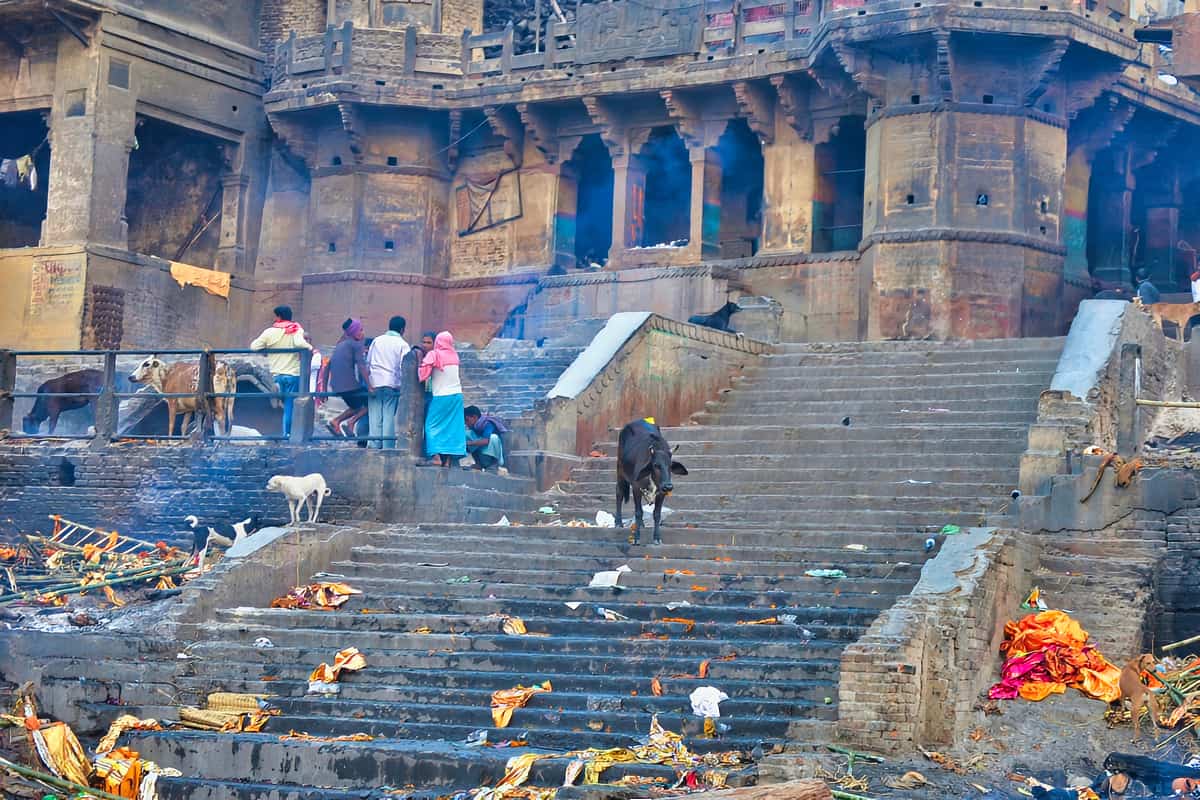
When is the Best Time to Visit the Varanasi Ghats?
While any time of year is fine, the best weather occurs from October to March, when average highs average 59 degrees and lows average 41. Dussehra, Bahrat Milap, and Diwali are all occasions worth commemorating at this time. The Ganga Festival is held every year in the month of November to honor the goddess of the river.
Now let’s talk about the Varanasi ghats called burning ghats!
Kedar Ghat
Assi Ghat is the name given to the point where the Ganges and the Assi rivers come together. Because of its location in the city’s south, the Ghat never sees the same level of foot traffic as the rest of Varanasi. Even in modern times, Hindus continue to travel to worship at a lingam that is devoted to Shiva and is situated beneath a pipal tree.
While there, they also participate in ritual cleansing and worship. This area is home to a great selection of unique shops and restaurants. Vaatika Cafe is the place to go to if you’re craving pizza or spaghetti and want to take in some breathtaking scenery at the same time. On foot, the journey to Dasaswamadh Ghat takes somewhere in the neighborhood of a half an hour.
The Chet Singh Ghat (The Ghat)
The Chet Singh Ghat is the site of a significant amount of histoy. In the 18th century, the Maharaja Chet Singh, who ruled the Indian city of Varanasi, built a fortified outpost in that location from which he waged war against the British. This clever and resourceful man was defeated and taken captive, but he was able to get away by making a rope out of turbans and using it to escape.
Darbhanga’s Ghat
Don’t forget to bring your camera with you when you go to Darbhanga Ghat! The incredible building is a perfect compliment to the stunning scenery. A wonderful choice for a place to stay is the Palace Hotel, which is located nearby. In the early part of the twentieth century, it was built by the king and queen of the Bihar kingdom.
Next to it, in 1912, the Munshi Ghat was constructed by Sridhara Narayana Munshi, who was the finance minister for the state of Darbhanga.
Dasaswamadh Ghat
Just a little drive away from Assi, you’ll find the Varanasi ghats that were mentioned earlier in the conversation. While Dasaswamadh is the epicenter of activity and the primary draw for visitors to Varanasi, Assi is still relatively devoid of visitors. This ghat is considered to be the holiest of all the ones in Varanasi because it is the location of the evening Ganga Aarti.
According to an ancient Hindu tale, Lord Brahma constructed this ghat expressly for the purpose of welcoming Lord Shiva when he arrived. Legend has it that Brahma once offered a sacrifice in front of the sacred fire, which was a horse. If you enjoy being in the middle of the action, this is the perfect location for you to be because it is a carnival full with priests, pilgrims, flower dealers, and beggars.
Manasaro Ghat’s
Man Mandir is one of the more ancient Varanasi ghats, and it is famous for the spectacular Rajput architecture it contains. Around the year 1600, the Rajput Maharajah Man Mandir Singh of Jaipur established his palace on this location. Sawai Jai Singh II, in the 1730s, was the one who initiated the construction of an observatory for the benefit of science.
Even to this day, the astronomy equipment has not been damaged and remains fully operational. These can also be viewed for your convenience. On the expansive terrace, there is a breathtaking panorama of the Ganges River.
The Scindhia Ghat
If you are looking for a place to get away from it all and relax, Scindhia is the place to go. There is a Shiva Temple located close to the water’s edge that has been partially submerged as a result of the flooding. Around the year 1830, when construction of the ghat first started, the temple started to subside.
If you have a strong stomach and a sense of adventure, you may try to locate some of the most important temples in Varanasi by making your way through the city’s winding and congested streets. The term Sidha Kshetra has been given to this tourist attraction that resembles a maze.
Bhonsale Ghat
This ghat, which is immediately distinguishable due to the one-of-a-kind design it possesses, was built in the year 1780 by the Maratha ruler Bhonsale of Nagpur. Stone is used in the construction of this tall building, and each window on the top floor is a miniature work of art that has been meticulously carved.
There are several significant cultural landmarks located there, including the Lakshminarayan Temple, the Yameshwar Temple, and the Yamaditya Temple. Since a fraud investigation in 2013 in which members of the royal family were implicated, this ghat has been the topic of some discussion.
Manikarnika Ghat
If you have an interest in macabre topics, Manikarnika, also known as The Burning Ghat, is an excellent location for you to explore. The Varanasi ghats are the locations of the vast majority of cremations that take place. There is a common belief that traveling to the Ganges for burial can free a person from the reiterative cycle of being born, living, and dying.
The surrounding stacks of wood will ensure that there is always some kind of fire going on. The doms, who are members of the lowest caste, are the ones who are tasked with taking care of the deceased and carrying out the cremation process. If you are courageous and eager enough to want to see the rights for yourself, there are priests who will let you watch from the top floor of a nearby building for a small fee.
You can find them on the other side of the street. You should not allow them to overcharge you because pricing are negotiable. There are two outstanding walking tours that provide in-depth information on the subject. These tours are called Heritage Walk Varanasi and Death and Rebirth in Banaras.
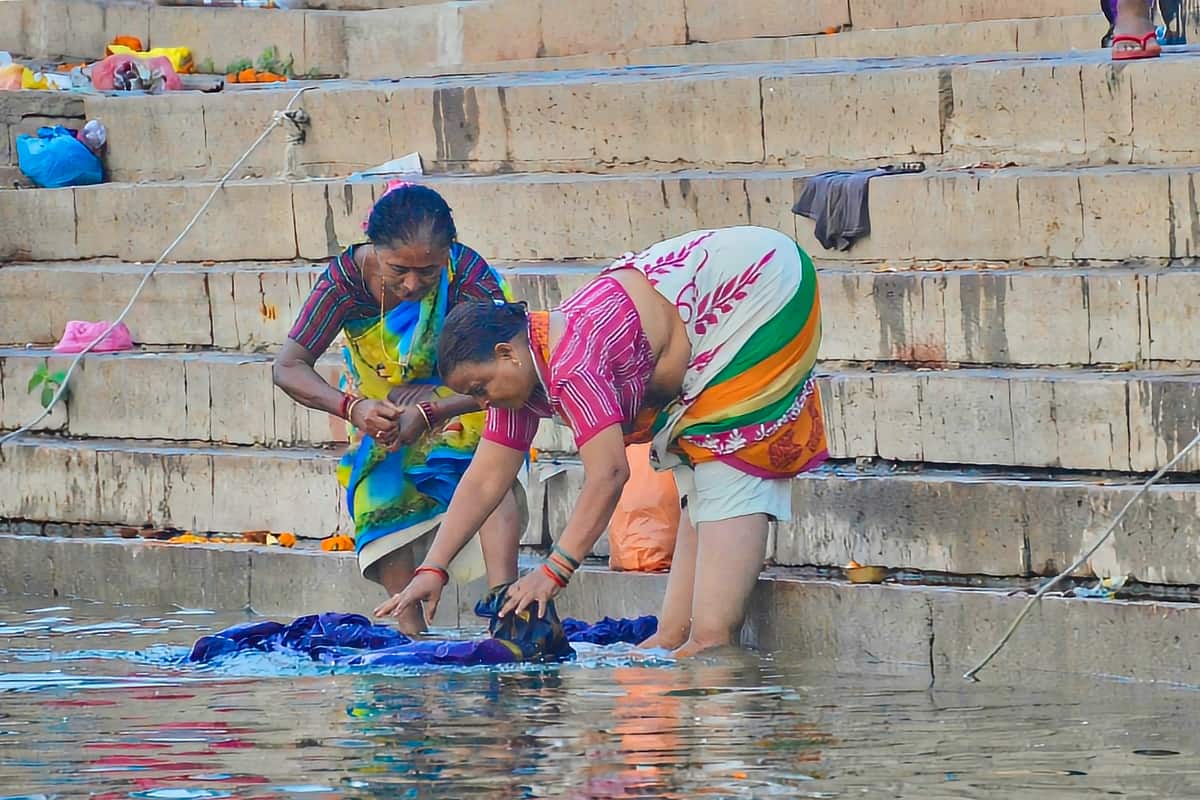
Varanasi, India Is Easily My Most Unforgettable Moment.
Nothing can prepare you for what you’ll see in the Varanasi ghats. The pollution is bad, the traffic is worse. While most of India is an organized chaos, Varanasi is simply chaos with alleys reeking of urine.
After visiting the Varanasi ghats, be prepared to be covered in human ash and to see bloated bodies floating in the river. The pollution doesn’t seem to bother men who strip down to their shorts to bathe in what is believed to be the world’s most sacred river.
People are more accepting of death here. Funerals are a public affair where the body is carried through the streets over the heads of rickshaw drivers while teenagers take selfies.
Poverty is a serious problem in India with only 29% of the people regularly employed. A lot of the people resort to scams and pickpocketing to make ends meet. Rickshaw drivers and tour guides can be more than a little aggressive over their fees.
Varanasi is a city of contradictions. It can be spiritually moving and yet disheartening. It is terrifying and exciting all at once. Some parts are incredibly beautiful, and some places are disgustingly sordid.
Of the 84 Varanasi ghats throughout Varanasi, some are used for cremation (Dashashwamedh, Manikarnika, and Panchganga) while others are used for bathing and washing clothes. It is recommended that you do your own laundry by hand in your room.
Many Westerners find the Varanasi ghats a difficult place to be, particularly the ones where body disposal takes place. Those who have come to terms with such things may actually find it peaceful. The ceremonies are indeed a learning experience and the poojas are hauntingly beautiful.
Because firewood is expensive, you may see people begging for money to buy wood to bury a deceased family member or offer to be a tour guide. It is difficult to find words to describe the act of watching a body dipped in the river and lit on fire. Most of the people are accepting of the finality of death and take the great family gathering as an excuse to have a bit of a party.
It should be pointed out that while as many as 80 cremations are carried out daily in Varanasi, not all people are allowed to be burned along the river. Babies and pregnant women are considered too holy to burn while prostitutes are considered not holy enough. They’re often thrown in the river tied to weights.
Eventually, the weight slips off and the body floats to the surface. It is almost a guarantee you will see one on a sunrise tour. If the thought is a little stomach turning for you, you may decide to opt for the sunset tour. Occasionally, bits wash up on shore and become food for the feral dogs. You are advised to avoid these animals.
The subject of disposal of the dead is fascinating but someone outside of the Hindu culture may feel uncomfortable viewing the act. It may help if you are accompanied by someone who can explain what is going on in the ceremony and why.
This could be one of the most heart wrenching places you will ever visit. Please do realize that every culture has its ways and traditions. After all, many Hindus may find your weekly trip to McDonald’s abhorrent.
The world is a diverse place and history is rich with those who sacrificed everything for a higher cause as well as those who carried out acts of barbarism. Rather than shun the unpleasantness of this world, find out what you can learn from it and how you can strive to make the world a better place, if only by removing some of the suffering.

